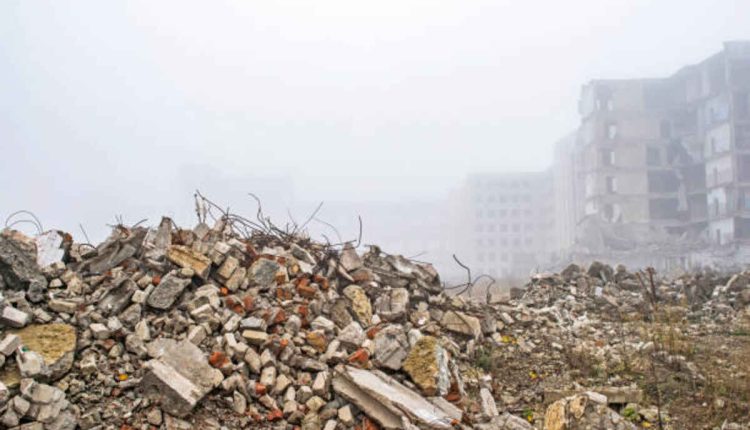Construction and demolition debris (C&D debris) refers to nonhazardous material leftover from construction projects such as renovation, restoration, or demolition that doesn’t pose a health or environmental risk – for instance, insulation, drywall, wood, and metal waste can all fall under this classification. Find the best Demolition Anaheim.
Most debris can be reused or recycled to reduce costs, help the environment, and benefit local economies while helping prevent contamination of landfill sites.
Recycling
Reusing and recycling materials whenever possible are vital practices in an age where resources are increasingly being overexerted, misused, and quickly depleted. Recycling construction and demolition waste helps conserve landfill space, reduces environmental impact when extracting raw materials for manufacturing new items, and saves money by forgoing the need to purchase replacement items from stores or transport them themselves.
C&D waste includes many recyclable materials, including concrete, asphalt shingles, wood products such as lumber and engineered wood products, bricks, and ceramic tile, as well as metals like steel and aluminum that could be recycled; recycled materials have many uses such as aggregate, road building materials mulch soil amendments. Reusing recycled materials on projects can help decrease their overall waste output while cutting costs through reduced purchases/transportation/disposal/storage fees while increasing profitability through avoided disposal fees and storage fees.
Construction sites should adopt waste diversion plans and regularly track progress toward their implementation. An on-site dumpster allows construction debris to be quickly collected for recycling, while trash haulers sort and recycle debris when picking it up. Monthly construction reports allow tracking performance while verifying whether diversion and recycling programs are working effectively.
Salvage
Construction and demolition waste comes from projects ranging from home building to airport demolition. This waste can take various forms, from wood products, steel, concrete, glass, asphalt shingles, brick and tile installations, and paper to wet and dry paint; instead of discarding everything, salvaging and recycling as much of this material as possible is the best approach.
Some waste materials can be placed directly into landfills; however, most require sorting before being recycled. Sorting can occur either during deconstruction, on-site at a sorting facility, or off-site at a C&D. recycling center – each option offers its own set of advantages for saving landfill space, mitigating environmental impacts, creating jobs, and creating economic advantages.
Local governments can increase reused C&D waste by passing ordinances requiring that a certain percentage of debris from construction or demolition be diverted from landfills. Such diversion rates encourage developers to design buildings or structures with recyclable or reusable features like standard sizes, advanced framing techniques, prefabrication processes, and on-site protection of materials.
C&D waste cannot be put out on trash day, but it can be sent directly to privately owned disposal facilities. Below is a list of facilities accepting C&D waste from both residents and businesses alike that take both residential and commercial C&D waste for disposal. These disposal sites get salvage, recycling, and landfill diversion opportunities to help reduce your overall waste volume.
Disposal
No matter the scale or scope of your construction project, waste is unavoidable. However, by adopting waste management practices early on, you can help limit how much material needs to be discarded as construction proceeds.
Reducing waste through recycling or reuse is excellent, but some materials need to be disposed of. That is why you must understand the construction and demolition waste disposal process before beginning a project.
Construction and demolition waste (C&D waste) encompasses debris from an array of projects, from renovating homes to deconstructing airports. C&AD debris may include building materials, packaging, wood, rocks, glass gypsum concrete, and hazardous substances like asbestos.
C&D waste cannot be mixed in with regular trash at the curb but must instead be taken to an approved landfill or disposal site for processing. Material must first be separated before being sent either for disposal or collection by recycling facilities.
Sorting demolition waste can be arduous and time-consuming, but it will save money and the environment by diverting it from landfills. You can do it yourself or hire a company that specializes in it – be sure to ask about fees, operating hours, and delivery instructions prior to making your choice.
Alternatives
Many types of materials can be reused during the construction process. These include building products like bricks, tiles, ceramics, and metals, as well as demolition waste such as wood from formwork made of plywood and dimensional lumber. Reused materials may even be repurposed as raw material for new projects – for instance, as coarse aggregates for concrete production – though certain reuse efforts may be unfeasible due to logistical considerations, e.g., repurposing prefabricated modular metal forms.
Reusing waste materials in construction requires adhering to Value Engineering principles, such as designing multiple functions into one material. This approach eliminates the need to produce and transport extra materials directly to the construction site while simultaneously decreasing how much is disposed of as waste, leading to less expensive construction and maintenance projects overall.
C&D wastes pose an ever-increasing global challenge with devastating environmental and resource depletion impacts, but by adopting a circular economy model, societies can limit such outcomes.
Local practices for handling C&D debris waste vary depending on factors like economic conditions, societal priorities, the availability of markets for recycling or reuse, transportation options, and regulatory requirements. Some local authorities charge disposal fees while others do not; such fees may have an effect on diversion rates but only sometimes alter overall waste flows or disposal rates.
Read also: When To Demolish A Property.










